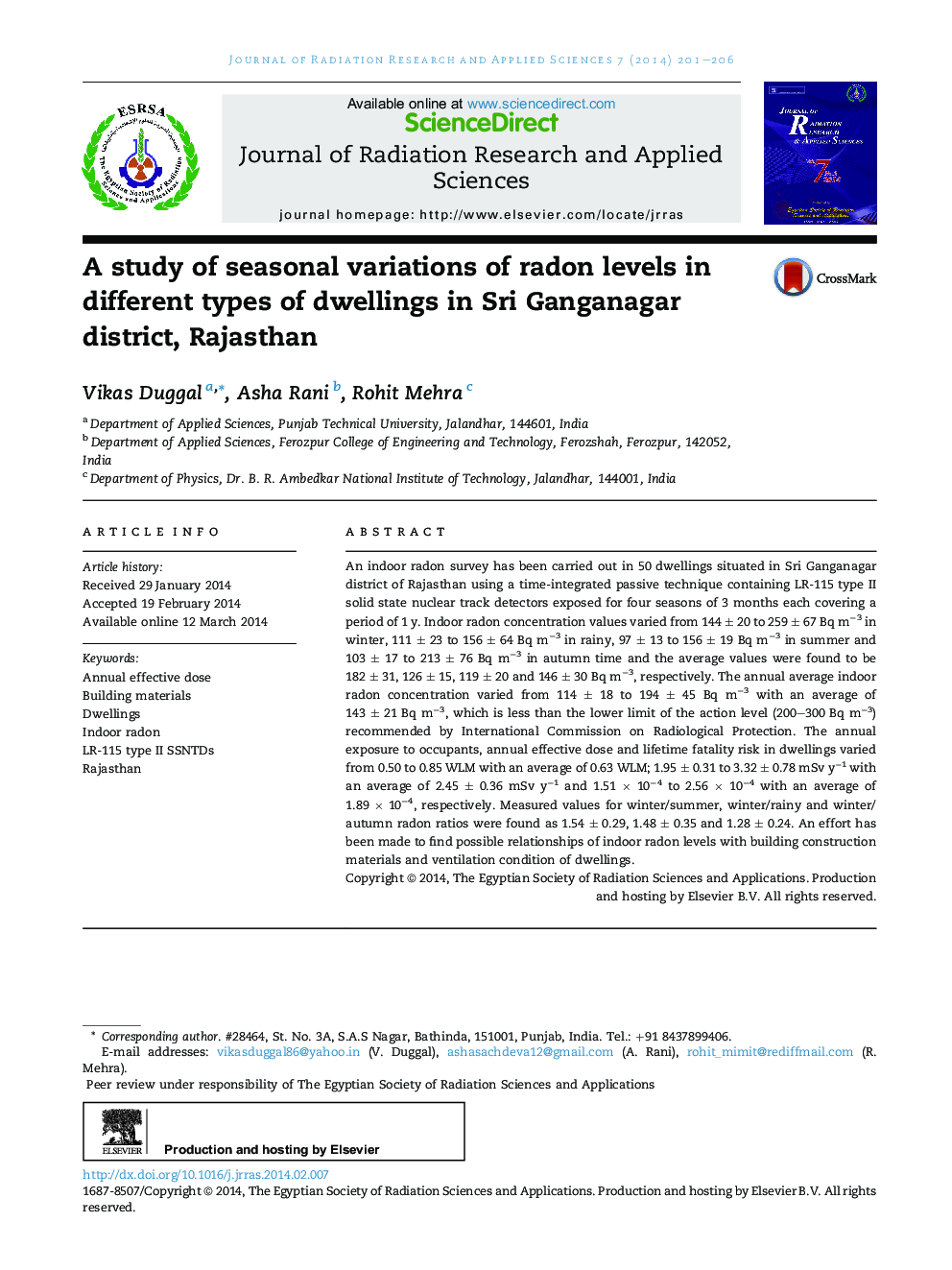| Article ID | Journal | Published Year | Pages | File Type |
|---|---|---|---|---|
| 1570334 | Journal of Radiation Research and Applied Sciences | 2014 | 6 Pages |
An indoor radon survey has been carried out in 50 dwellings situated in Sri Ganganagar district of Rajasthan using a time-integrated passive technique containing LR-115 type II solid state nuclear track detectors exposed for four seasons of 3 months each covering a period of 1 y. Indoor radon concentration values varied from 144 ± 20 to 259 ± 67 Bq m−3 in winter, 111 ± 23 to 156 ± 64 Bq m−3 in rainy, 97 ± 13 to 156 ± 19 Bq m−3 in summer and 103 ± 17 to 213 ± 76 Bq m−3 in autumn time and the average values were found to be 182 ± 31, 126 ± 15, 119 ± 20 and 146 ± 30 Bq m−3, respectively. The annual average indoor radon concentration varied from 114 ± 18 to 194 ± 45 Bq m−3 with an average of 143 ± 21 Bq m−3, which is less than the lower limit of the action level (200–300 Bq m−3) recommended by International Commission on Radiological Protection. The annual exposure to occupants, annual effective dose and lifetime fatality risk in dwellings varied from 0.50 to 0.85 WLM with an average of 0.63 WLM; 1.95 ± 0.31 to 3.32 ± 0.78 mSv y−1 with an average of 2.45 ± 0.36 mSv y−1 and 1.51 × 10−4 to 2.56 × 10−4 with an average of 1.89 × 10−4, respectively. Measured values for winter/summer, winter/rainy and winter/autumn radon ratios were found as 1.54 ± 0.29, 1.48 ± 0.35 and 1.28 ± 0.24. An effort has been made to find possible relationships of indoor radon levels with building construction materials and ventilation condition of dwellings.
